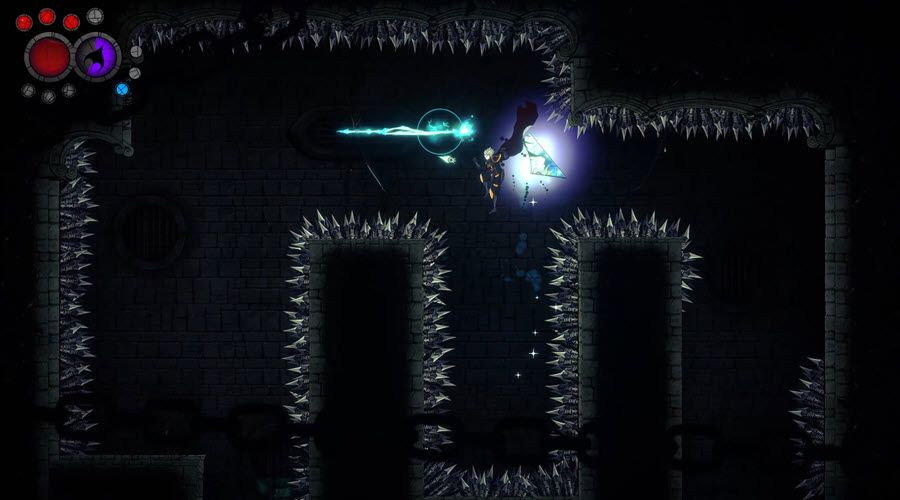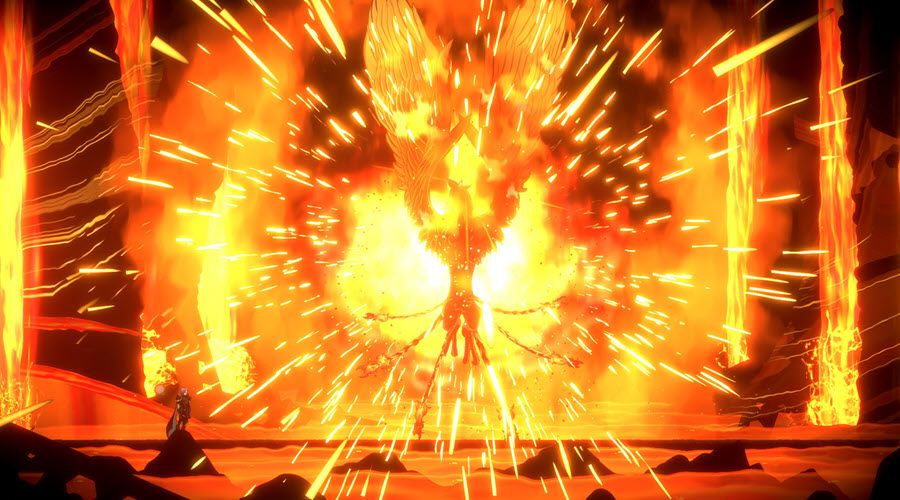Aeterna Noctis

Review
Aeterna Noctis opens with a few animated cutscenes introducing its intricate universe: two factions, one led by the Queen of Light and the other by the King of Darkness, are condemned by the God of Chaos to fight each other for eternity. After every battle, the loser is deprived of all powers and restarts a cycle of life and death in search for revenge. You play as the King of Darkness who, after being defeated and falling into an inferior dimension, must recover his powers and return to fight the Queen of Light who sits on the throne of Aeterna. This is a very light premise; there is a lot more going on and the story will be slowly put together like mosaic pieces thanks to a great number of characters that you will encounter throughout the journey.
The gameplay includes classic metroidvania elements and is significantly inspired by Hollow Knight. You need to unlock a wide range of abilities and use them to traverse environments filled with enemies and traps that require great precision platforming. You can equip yourself with gem stones to upgrade your stats, use blood energy to heal yourself and recover your spirit by visiting the point where you died or by defeating the enemy who killed you. There is a checkpoint system based on torches and thrones; the first ones are more like points where you respawn after dying while the latter are major hubs where you can upgrade your skills and fast travel. You can also find keys that give you access to trials; by completing them you unlock abilities that are crucial to the gameplay.

All these mechanics will sound familiar to those who have had some training from other metroidvania games, but Aeterna Noctis is more a platformer than anything else and it can be very hard even for veterans of the genre. While I love challenges in these games, there were some parts maybe too unbalanced and unfair to the player, requiring perfect timing as well a bit of luck. Maybe this is why developers recently updated the game with a new game mode called “Aeterna”, which seems to be easier, removing multiple traps along the way and lowering enemies’ HP (unfortunately this mode doesn’t unlock achievements at this time). The good news is that now you can change the difficulty mid-game if you feel one area is too frustrating for you; don’t expect it to be a walk in the park, though.
The combat system is simple and smooth enough, but it’s not engaging as platforming and becomes repetitive after a while. Most of attacks are melee-based, with the arrow ability used more for moving through environments than for fighting enemies. While there is a decent variety of enemies and attack patterns, the combat feels fun and engaging only during boss fights, which are incredibly challenging.
As you progress, you will discover multiple interconnected zones, each with its own distinct biomes, type of enemies and traps. From underground lava caves and goblin mines to beautiful forests and giant towers, there is a great variety of areas, always kept together by dark tones and gorgeous visuals that partially reminded me of Castlevania. Music and sounds really contribute to the game’s atmosphere, and you know the audio department did a good job when you stop playing the game for a few seconds only to hear the music and sound effects in the background (there is also a piano/organ that can be used).
So is it everything perfect? Well, unfortunately no. There are some major and minor annoyances. First off, the game should make clear what abilities you need to move further with the story. I often stumbled on long sections of fights and traps only to realize I couldn’t progress further cause I was missing one ability (which nobody warned me about). It forced me to waste massive amounts of time moving back to the closest fast travel point.
The other problem is the quest log. Soon after the tutorial, I was overwhelmed by a great number of side quests, many of which I had no idea how to solve. As I was progressing through the story, I accidentally completed some of them without even realizing it. I think that the quest log could really use some improvements, like showing the quest-giver location on the map, and generally mention the area where the player should start looking. Any sort of (minimal) guidance would definitely make quests tracking less confusing and the experience more enjoyable.
Even the areas you explore are hidden by a fog of war which can be only removed by purchasing maps from a travelling merchant. And yet, the map doesn’t really do what it states. It doesn’t make the area visible from your menu, it only removes the fog within the area you already explored, which feels quite misleading. There is another map that makes items and secrets visible on the area, but it’s so expensive that it will require lot of grinding, and its price should probably be adjusted to match the amount of money you can get from enemies and simple exploration.
It’s worth mentioning that these issues didn’t have a huge impact on my experience and they can probably be fixed with a few more updates.
Review written by Sonic Punk for Zeepond.com
Aeterna Noctis Steam Store Page
Positives
+ Excellent platforming+ Gorgeous aesthetic
+ Huge amount of content
+ Fun and challenging boss fights
+ Great work on music and sound effects
Negatives
- Combat is not engaging as platforming- Confusing progression, quest and map system
Review Summary
Aeterna Noctis doesn’t reinvent the wheel, but it combines different mechanics to provide a refreshing experience.
Share this review!
Zeepond Rating: 8/10










Video
Game Categories
All Game Reviews (1356)Hardware Reviews (0)
Action (341)
Adventure (151)
Alpha Games (2)
Anime (5)
Board Games (3)
Casual (135)
First Person (19)
First Person Shooter (30)
Hardware (0)
Horror (38)
Massive Multiplayer Online (4)
Pixel Graphics (23)
Platformer (94)
Puzzles (65)
Racing (26)
Role Playing Game (62)
Simulation (53)
Sports (20)
Strategy (246)
Third Person (12)
Utility software (1)
Virtual Reality (22)

